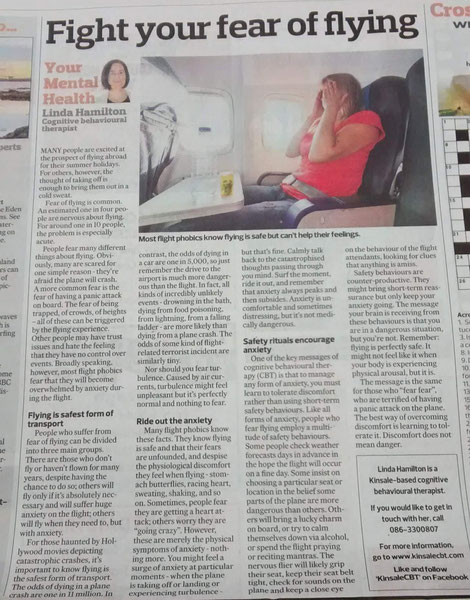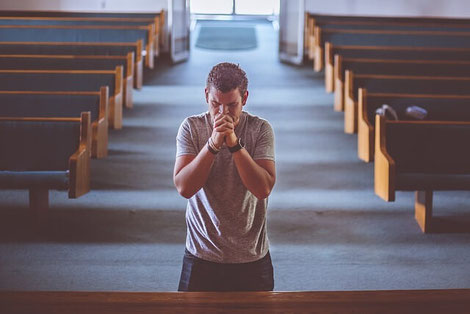
Many people are excited at the prospect of flying abroad for their summer holidays. For others, however, the thought of flying is enough to bring them out in a cold sweat.
Fear of flying is common. An estimated one in four people are nervous about flying. For around one in 10 people, the problem is especially acute.
People fear many different things about flying. Obviously, many are scared for one simple reason - they’re afraid the plane will crash. A more common fear is the fear of having a panic attack on board. The fear of being trapped, of crowds, of heights - all of these can be triggered by the flying experience. Other people may have trust issues and hate the feeling that they have no control over events. Broadly speaking, however, most flight phobics fear that they will become overwhelmed by anxiety during the flight.
People who suffer from fear of flying can be divided into three main groups. There are those who don’t fly or haven’t flown for many years, despite having the chance to do so; others will fly only if it’s absolutely necessary and will suffer huge anxiety on the flight; others will fly when they need to, but with anxiety.
For those haunted by Hollywood movies depicting catastrophic crashes, it’s important to know flying is the safest form of transport. The odds of dying in a plane crash are one in 11 million. In contrast, the odds of dying in a car are one in 5,000, so just remember the drive to the airport is much more dangerous than the flight. In fact, all kinds of incredibly unlikely events - drowning in the bath, dying from food poisoning, from lightning, from a falling ladder - are more likely than dying from a plane crash. The odds of some kind of flight-related terrorist incident are similarly tiny (continued below...)
Nor should you fear turbulence. Caused by air currents, turbulence might feel unpleasant but it’s perfectly normal and nothing to fear.
Many flight phobics know these facts. They know flying is safe and that their fears are unfounded, but despise the physiological discomfort they feel when flying - stomach butterflies, racing heart, sweating, shaking, and so on. Sometimes, people fear they are getting a heart attack; others worry they are “going crazy”. However, these are merely the physical symptoms of anxiety - nothing more. You might feel a surge of anxiety at particular moments - when the plane is taking off or landing or experiencing turbulence - but that’s fine. Calmly talk back to the catastrophised thoughts passing through you mind. Surf the moment, ride it out, and remember that anxiety always peaks and then subsides. Anxiety is uncomfortable and sometimes distressing, but it’s not medically dangerous.
CBT, SAFETY BEHAVIOURS AND FEAR OF FLYING

One of the key messages of cognitive behavioural therapy (CBT) is that to manage any form of anxiety, you must learn to tolerate discomfort rather than using short-term safety behaviours. Like all forms of anxiety, people who fear flying employ a multitude of safety behaviours. Some people check weather forecasts days in advance in the hope the flight will occur on a fine day. Some insist on choosing a particular seat or location in the belief some parts of the plane are more dangerous than others. Others will bring a lucky charm on board, or try to calm themselves down via alcohol, or spend the flight praying or reciting mantras. The nervous flier will likely grip their seat, keep their seat belt tight, check for sounds on the plane and keep a close eye on the behaviour of the flight attendants, looking for clues that anything is amiss.
Safety behaviours are counter-productive. They might bring short-term reassurance but only keep your anxiety going. The message your brain is receiving from these behaviours is that you are in a dangerous situation, but you’re not. Remember: flying is perfectly safe. It might not feel like it when your body is experiencing physical arousal, but it is.
The message is the same for those who “fear fear”, who are terrified of having a panic attack on the plane. The best way of overcoming discomfort is learning to tolerate it. Discomfort does not mean danger.